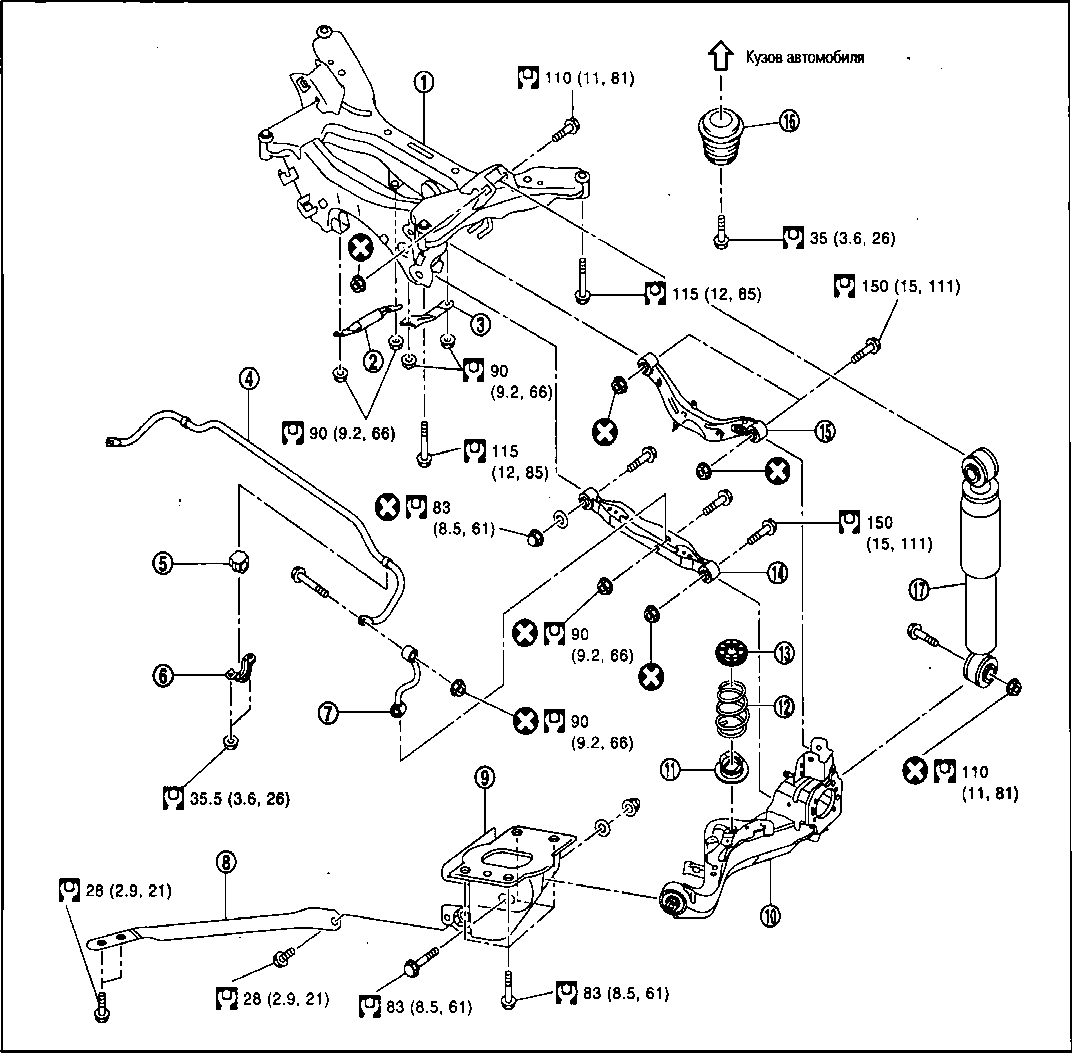
Qashqai suspension device
Content
Crossovers Qashqai Japanese brand Nissan appeared on the market in February 2007. As the car was used, an idea appeared of its frankly weak nodes. One of them is the suspension. Rear suspension Nissan Qashqai independent multi-link. Front - independent suspension with MacPherson struts. The material will focus on the features and disadvantages of the crossover chassis.
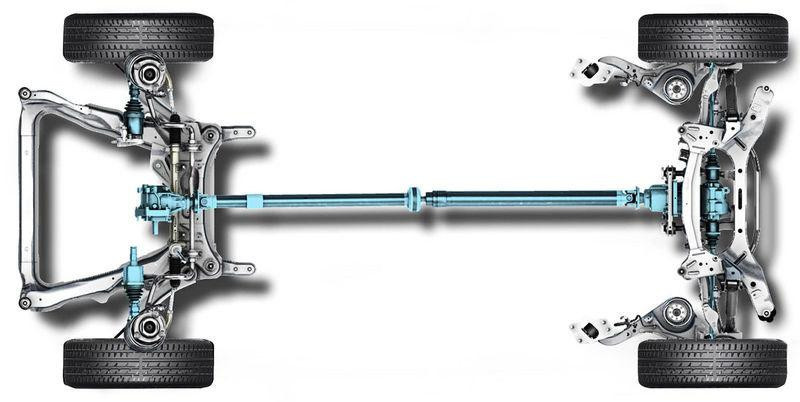
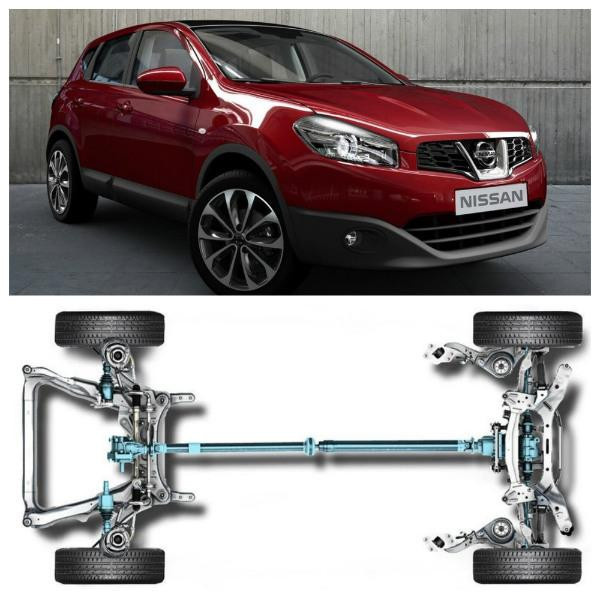
Suspension device Nissan Qashqai
Qashqai crossovers of the first generation began to be produced from the end of 2006. The car went on sale in February 2007. In the first year, the number of Qashqai owners increased to 100, and we are talking only about sales in Europe. Three years later, the Nissan concern began restyling, which, in addition to the appearance of the car, also affected the details of the chassis. It is assumed that the reason for the modification was customer reviews, indicating a limited resource of various suspension components.
Qashqai front suspension
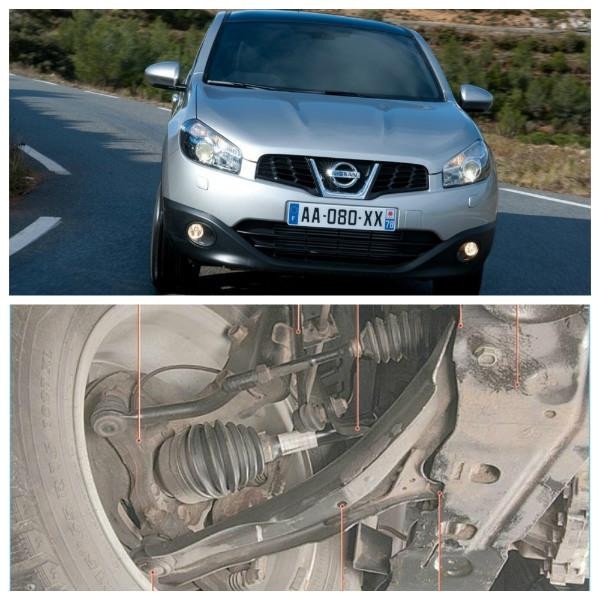
On Qashqai crossovers, the front of the chassis consists of the following elements:
- subframe, which is attached to the side members of the body;
- transverse levers;
- ball bearings;
- steering knuckles;
- shock absorbers;
- stabilizer struts responsible for the lateral stability of the car;
- anti-roll bars;
- front and rear rubber-metal hinges (silent blocks).
These parts (except for the rod) are installed symmetrically on both sides of the vehicle. The suspension itself belongs to the class of lever-spring independent structures of the MacPherson type. In this case, telescopic-type shock absorbers are used, which are attached to the steering knuckles using cap bolts. Twisted cylindrical springs are assembled on the racks. Steering rods are also connected to the right and left steering knuckles through tips.

The levers are attached to the subframe on the left and right sides with rubber and metal hinges. There is a ball joint at the junction of the lever with the fist. It is worth noting that the ball Qashqai is a node with a very limited resource, which is determined by the operating conditions. Frequent driving on bad roads stresses the support, reducing its service life.
The anti-roll bar is attached to the subframe with two brackets. It is connected to the left and right wheel shock absorber struts by rods (stabilizer struts). Installation of hubs on Qashqai is carried out using double-row bearings. Such bearings, due to their design features, can withstand a greater load (compared to single-row bearings).
Rear suspension diagram
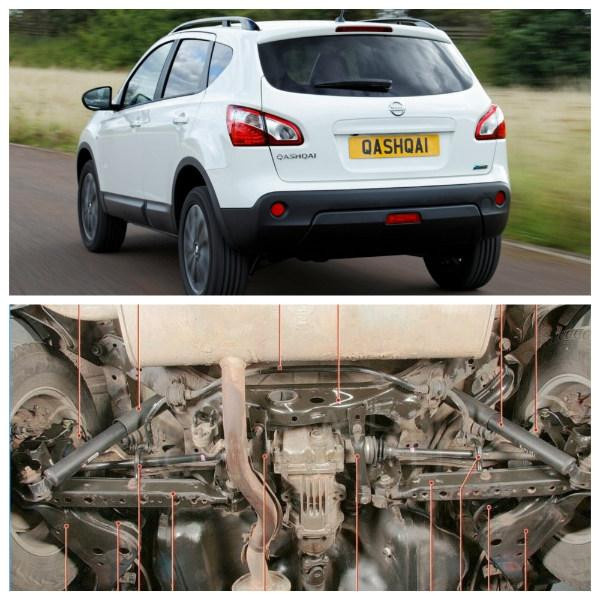
The Qashqai rear suspension also belongs to the class of independent lever-spring structures. Main elements:
- top and bottom forks (two installed on each side);
- telescopic shock absorbers;
- crossbar and two of its amplifiers;
- anti-roll bar and two of its racks (links);
- trailing arms (there is one on each side);
- springs.
The design of the suspension of a Japanese car of a European assembly does not involve adjusting the angle of inclination, therefore, if the indicators deviate from the norm, it is worth concluding that the promised resource has been exhausted. In such a situation, spare parts are required. The wheel alignment is adjusted by the bolts securing the lower transverse arm.

The rear wheel hubs are also equipped with double row ball bearings. The hub is attached to the knuckle through the knuckle (the part where the bearing is located), four bolts for the flange.
Weak points of the chassis
Complaints to the front chassis are associated with a small resource of several of its elements: silent blocks, ball bearings, shock absorber support bearings. In the rear suspension, the weak point is the rubber-metal hinges on the levers responsible for the angle of inclination. The steering rack with rods and spikes is also distinguished by its fragility.
One of the main performance characteristics of automotive components can be considered service life. For Qashqai suspension parts, it is as follows:
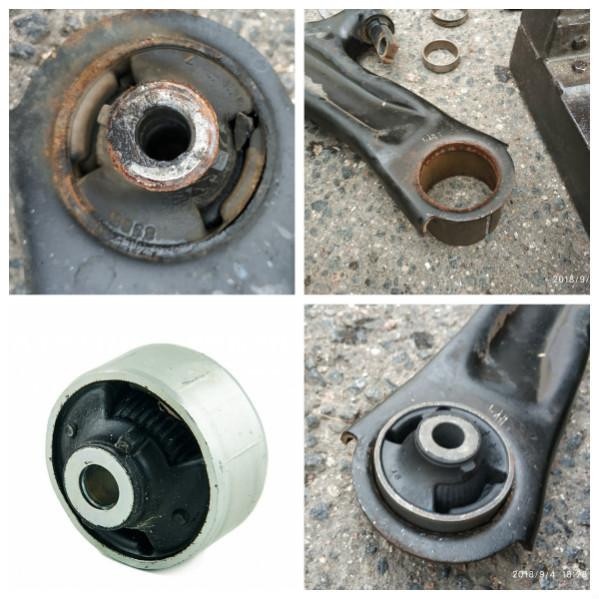
- Rubber and metal hinges of the front levers take care of about 30 thousand km, the rear hinges of the subframe last a little longer - about 40 thousand km.
- The front suspension shock absorbers work properly for 80 thousand km, the rear - for 60 thousand. It is worth noting that the thrust bearings of the front shock absorbers change more often than the struts themselves.
- Ball bearings for mounting the steering knuckle go a little over 30000 km. The advantage is that parts can be replaced - there are analogues and original components on sale.
- Destructive processes in the silent blocks of the rear suspension brake levers begin after 5 years of vehicle operation.
- Tie rods, like tips, often make themselves felt after passing the mark of 60. A characteristic feature is a blow to the rack and pinion mechanism. Although the manufacturer recommends changing the guide set, there are many replacements on the market for local repairs.
Conclusion
Suspension Nissan Qashqai belongs to the class of independent lever-spring structures. The MacPherson strut is used in front, and an independent multi-link in the back. The limited resource of the front and rear suspension parts caused negative feedback from the owners of the first generation Qashqai, with an overall positive impression of operation. For this reason, Nissan subsequently improved the chassis of the car, improving the quality of its work.

